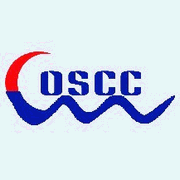A jubilee summit of the Three Seas Initiative (3SI), which brings together countries from Central and Eastern Europe, is scheduled for the end of April this year in Warsaw. This regional cooperation format was conceived in 2015 at the UN General Assembly during a meeting between Poland's President Andrzej Duda and Croatia's President Kolinda Grabar-Kitarović. The inaugural summit took place in Dubrovnik in 2016, where 12 presidents from the region gathered. Currently, the 3SI comprises 13 countries, stretching from the Baltics to Greece, and includes two associate countries: Ukraine and Moldova. Its strategic partners are Japan, the United States, and the European Commission. Over the past ten years, the initiative has established an Investment Fund, an Innovation Fund and also compiled a list of 140 priority projects focused on transportation, energy, and digital infrastructure. In addition to the initiative's formal activities, several other forums have emerged, including a business forum, a forum of regions, and a forum of universities.
Although most Western European countries, particularly Germany, have expressed reservations towards the 3SI—viewing it as potentially conflicting with some European Union actions—the initiative has received significant support from the United States, especially during Donald Trump's first presidency. He attended the 2017 summit in Warsaw, where then-US Secretary of State Mike Pompeo pledged $1 billion towards the Investment Fund. However, enthusiasm waned under President Biden, and the promised funds were not disbursed.
The Three Seas Initiative (3SI) has the potential to regain significance by broadening its focus beyond economic and infrastructure cooperation to include military collaboration, particularly on NATO's eastern flank. This initiative is significant both economically and militarily, especially with major infrastructure projects like Via Carpatia and Rail Baltica, which are essential for the movement of armed forces and military supplies. By leveraging U.S. interest in enhancing this collaboration, the 3SI could strengthen the bonds between Central and Eastern European countries and the United States. Additionally, it could play a crucial role in establishing secure trade corridors between Europe and India and serve as a platform for the countries in our region to reconstruct post-war Ukraine.
Despite these prospects, the current Polish government does not seem to prioritize the 3SI. Following the recent parliamentary elections, the position of the Government Plenipotentiary for 3SI was even abolished. To fully harness the potential of the countries in the region, the 3SI needs to generate greater interest from the Polish government. By leveraging existing opportunities and the interest of the United States, Poland should revitalize this initiative and create new perspectives for it, ensuring that this valuable integration idea is not missed.
Source, Łukasz Wojdyga



.jpg)








